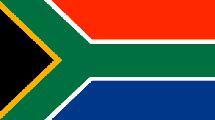By Director-General Matanzima Mweli
Media reports have again incorrectly stated that black and coloured youths are less likely to complete university today than in previous years. The reports followed press releases by Stats SA.
These statements are incorrect as well as misleading about the story of educational outcomes in South Africa over time. For example, Business Day last year published a piece titled, “Black youth less educated now than 20 years ago.”
Similarly, the statistician-general was quoted by News24 as saying that in the 1980s “for every black graduate there were 1.2 white graduates. Currently, for every one black person who graduates from university, there are six white people who make it through successfully.”
In fact, the number of black graduates per year increased more than 16-fold between 1986 (3 400 graduates) and 2012 (63 000 graduates).
This is according to a Stellenbosch University analysis of higher education data conducted by Dr Hendrik van Broekhuizen, who said: “While the HE (higher education) system produced 7.9 white graduates for each black graduate in 1986, by 2012 it produced 1.8 black graduates for every single white graduate.”
Needless to say, this magnitude of increase has far exceeded population growth. So to be clear: educational outcomes among black youths have increased both in terms of absolute numbers and as a proportion of the population.
Just since 2008, the numbers of black matriculants qualifying for university admission has doubled from about 60 000 to 120 000.
All of this is by no means to deny that unacceptable levels of inequality on the basis of race still exist.
This inequality is glaring whether one looks at the quality of learning achieved by children in specific school grades, or the proportions of youths completing matric or the proportions of youths completing university. In each case, our black and coloured youths remain at a considerable disadvantage.
The story of education in South Africa is one of great historical injustice and inequality, with outcomes that are persistent and will take a long time to change. But part of the story of educational outcomes is that pretty much all indicators are moving in the right direction.
The narrative that things were somehow better under apartheid or at some time in the past is inaccurate and unhelpful.
The statistician-general is right to highlight the inequalities that remain and to call for more support to black university students, but that is different from asserting that outcomes have regressed.
The statistician-general is also right to point to the solutions lying in the earlier phases of the school system. Improving the learning and teaching of early grade literacy and numeracy must be the top priority for the education sector.
The Trends in International Mathematics and Science Study (Timss) provides the most reliable, independent and scientific measure of the performance of our school system over time. Based on the testing of Grade 9s in a nationally representative sample of schools, Timss tells the story of low average performance, high levels of inequality, but – importantly – of improving outcomes in recent years.
South Africa has been the fastest improving education system in Timss between 2002 and 2015, and the improvements have been largest within the historically disadvantaged part of the school system.
There is still a long way to go in reducing educational inequalities in South Africa, and education system change necessarily takes time, but let’s make sure to check our facts and avoid myths such as that outcomes were better in the past.
Matanzima Mweli is Director-General of Basic Education.





